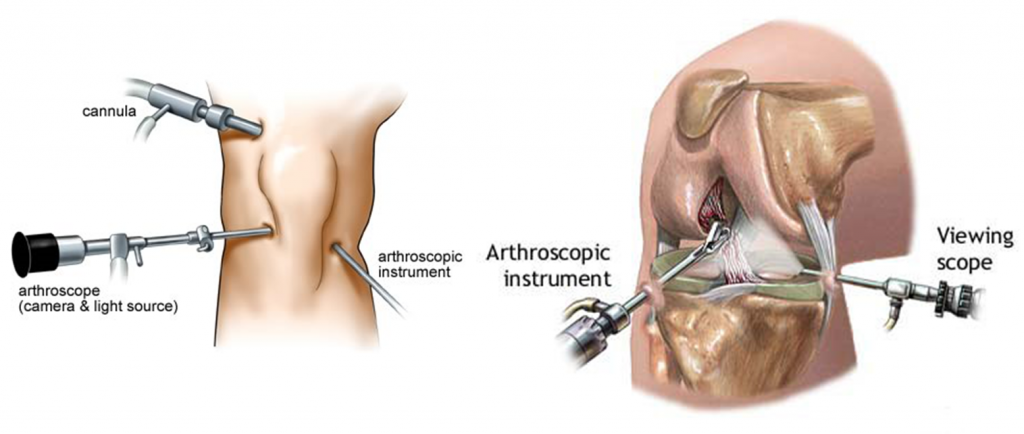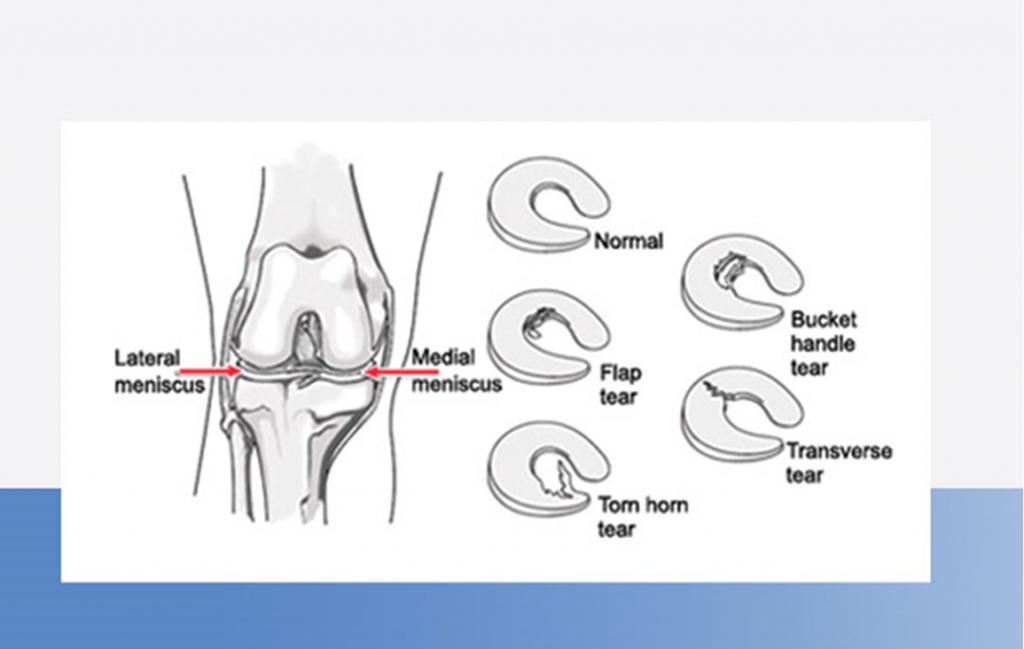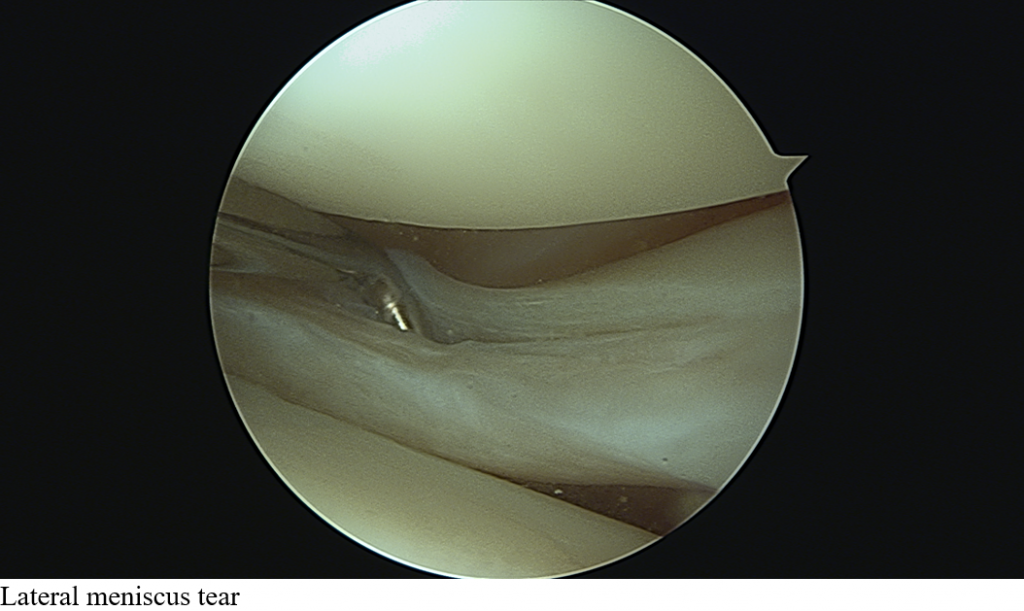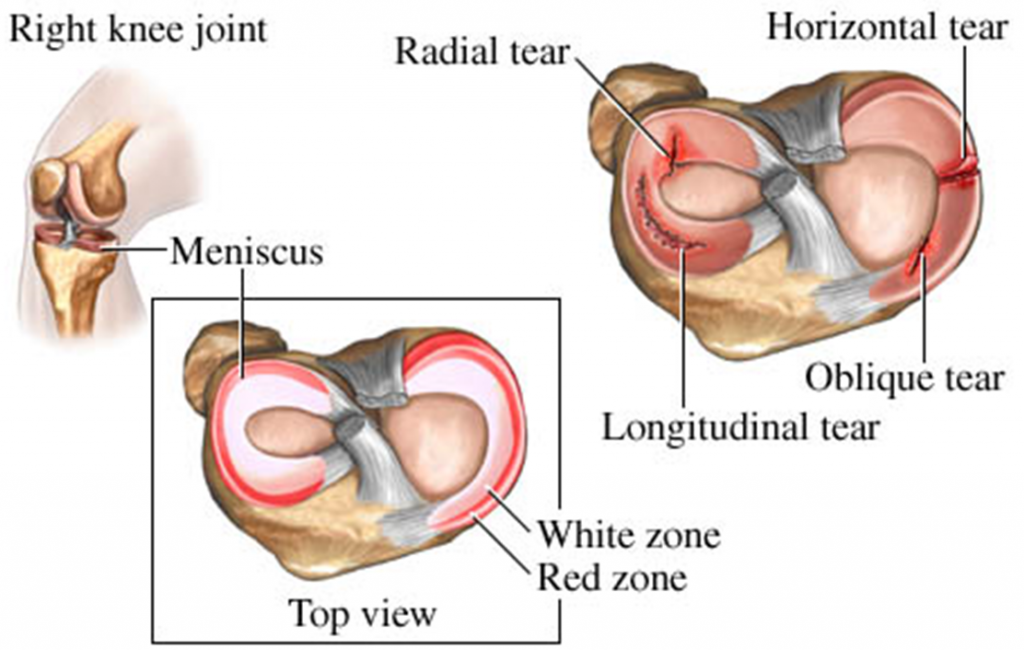Meniscus surgery & Knee Arthroscopy:

Medial meniscus tear [MRI Scan]

There are several types of arthroscopic meniscus procedures. The type of procedure used depends on what type of tear and where the tear is located.
- Simple tear. Tears in the outer one-third, or periphery, of the meniscus (which contains a rich blood supply) can be repaired with a 70% chance of successful healing. There are no restrictions, such as age, other injuries, or activity level for this procedure.
- Complex tear. Tears extending into the central one-third protion of the meniscus, which has a limited blood supply, can also be repaired in some cases.
If the meniscus has multiple tears located in different regions, is shredded or severely deteriorated due to multiple injuries, then it cannot be repaired. It may be possible to save some of the meniscus, but if it must be removed it can be later replaced with a transplant.
Meniscectomy:
Meniscectomy (or partial meniscectomy) refers to removal of all or part of a damaged cartilage within the knee called the meniscus. This is probably one of the most common procedures now performed by knee surgeons in the UK and is performed using a technique referred to as arthroscopy.
Arthroscopy:
- The arthroscopy involves inserting a small telescope attached to a camera into a small incision at the front of the knee (portal). This allows the whole of the knee to be inspected with water being used to inflate the knee.
- A fibre optic telescope instrument is used to view the internal cavity of the knee.
- The surgeon makes another incision through the other side of the front of the knee to insert small instruments to cut away the loose or torn fragment of the damaged meniscus. Whenever possible the surgeon will remove only the damaged portion of the cartilage leaving as much of the cushion function of the cartilage intact.
- This procedure takes place with the patient under either a general or regional anaesthetic.
- This allows the knee to be fully examined and the suspected damage to the cartilage (meniscus) to be confirmed and treated at the same time.
- The tear in the cartilage is often found at the back portion of the knee and access to this area can be difficult which is why the experience of the surgeon is critical.
- At the end of the procedure, which often lasts approximately half an hour, the 2 small puncture mark incisions are closed either with a small stitch or a paper strip.
- The patient remains in hospital for an average 4 hours after the surgery.
- The surgeon will see the patient before they are discharged, hopefully having explained what was found at the time of surgery.





Post-operative Instructions
- It is advisable in the immediate post-operative period to decrease the amount of inflammation after the operation by providing the patient with a supply of anti-inflammatory medication.
- On discharge general advice is given that walking and activity should be encouraged and guided by the pain.
- Whilst we encourage patients to get up and about after surgery, they are discouraged from going back to work for approximately two weeks period. Sometimes due to work commitment patients have to return earlier than this and these cases they are urged to be driven to the door of their work place or ideally work from home.
- In the three days following the operation, patients are encouraged to keep a compression bandage on the knee to reduce the swelling and also to visit their physiotherapist if required to work on strengthening the muscles around the knee.
- Patients will be given an outpatient follow up 2 weeks post surgery in order to inspect the wounds and check that the movement of the knee and the pain is satisfactory.
- Despite the fact that the cartilages do not possess nerve function, pain can be felt post-operatively as it was pre-operatively. It is not unusual to have experienced continued “twinges” of discomfort at the area of the meniscectomy as the cut and scars can remain sensitive for several weeks [occasional 8weeks].
- Each individual patient’s recovery time varies enormously but in general between 2 weeks post surgery the patient should be returning to near normal activity with resuming sporting activity approximately at 6 weeks.
Types of meniscus tears:




















Meniscus Tear:








